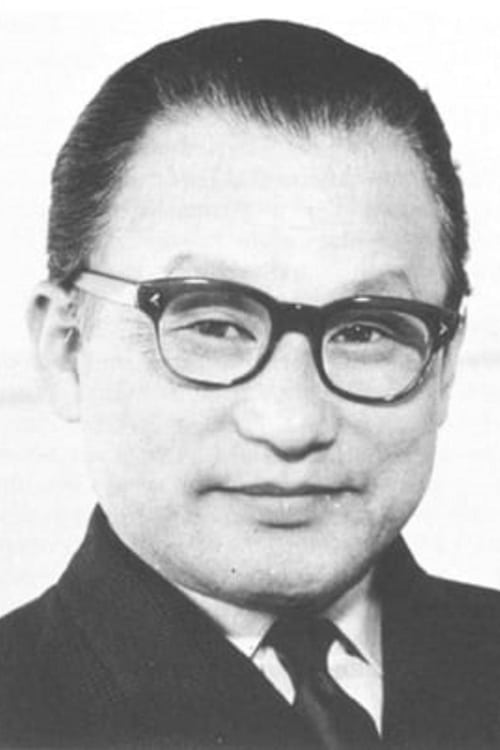Kazuo Miyagawa
출생 : 1908-02-25, Kyoto, Kyoto Prefecture, Japan
사망 : 1999-08-07
약력
Kazuo Miyagawa (宮川 一夫 Miyagawa Kazuo, February 25, 1908 – August 7, 1999) was an acclaimed Japanese cinematographer.
Miyagawa is best known for his tracking shots, particularly those in Rashomon (1950), the first of his three collaborations with preeminent filmmaker Akira Kurosawa.
He also worked on films by major directors Kenji Mizoguchi, Yasujirō Ozu, and Kon Ichikawa, such as Ugetsu Monogatari (1953), Floating Weeds (1959) and the documentary Tokyo Olympiad (1965) respectively.
Miyagawa is regarded as having invented the cinematographic technique known as bleach bypass, for Ichikawa's 1960 film Her Brother.

Renowned cinematographer Kazuo Miyagawa collaborated with a number of great Japanese filmmakers, including Akira Kurosawa, Kenji Mizoguchi, Kon Ichikawa, and Yasujiro Ozu. The following excerpts from the Japanese television documentary THE WORLD OF KAZUO MIYAGAWA explore Miyagawa and Kurosawa’s working relationship on RASHOMON.

Director of Photography
Based on a semi-autobiographical story by Ogai Mori, about a Japanese medical student who goes to Berlin to study in the 1880s and falls in love with a German ballet dancer.

Director of Photography
The tragic story of Gonza, a handsome ladies man, set in the Tokagawa Period, a time in which appearences are very important. Gonza competes with Bannojo for the honor to perform the tea ceremony to celebrate the birth of an heir to the lord of their clan. To see the sacred tea scrolls Gonza promises to marry the daughter of the family which possesses them, even though he is unofficially engaged to another. When studying the scrolls with Osai, the mother of the house, Bannajo sneaks into the house and steals their obis and runs through the town proclaiming the two as adulterers.

Director of Photography
In this drama at the end of World War II, the inhabitants of a small Japanese fishing village must come to terms with their nation's defeat and the sudden occupation of General MacArthur and his troops.

Cinematography
A bunraku puppet drama of the courtesan Ohatsu and her lover, Tokubei, a soy-sauce merchant whose fortunes have gone awry through the perfidy of a trusted associate. For Tokubei, suicide is the only honorable act left; for Ohatsu, it is the only emotionally viable one.

Director of Photography
Famous detective Kosuke Kindaichi follows a dying man's words to an enigmatic island, where he meets beautiful twin sisters and tragic events unfold.
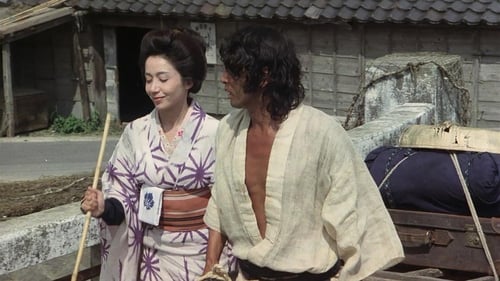
Director of Photography
선천적으로 앞을 볼 수 없는 오린은 연주와 노래를 하며 떠돌아 다니는 맹인 여자 예인들인 고제가 된다. 남자와의 관계를 금하는 고제의 계율을 어겨 홀로 떠돌아 다니는 하나레 고제가 되어 힘든 생활을 하던 중 한 남자를 만나게 되는데...

Director of Photography
Horror film based on the story by Ryunosuke Akutagawa.
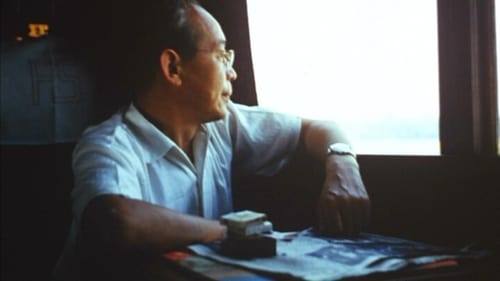
Kenji Mizoguchi: The Life of a Film Director (Aru eiga-kantoku no shogai) is a 1975 Japanese documentary film on the life and works of director Kenji Mizoguchi, directed by Kaneto Shindo (Onibaba). It runs 150 minutes and can be found on the second disc of the Region 1 Criterion Collection release of Ugetsu (1953).
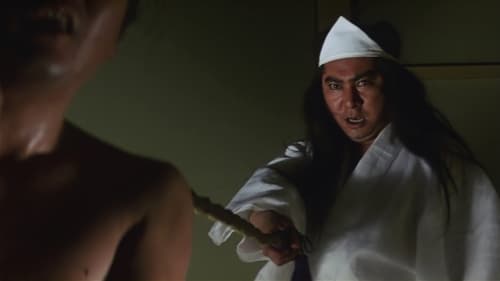
Director of Photography
Against the backdrop of the Edo treasury devaluing currency and driving many into poverty, Hanzo Itami enforces the law without regard to status. He shows inadequate respect to the treasurer, who wants him dead.
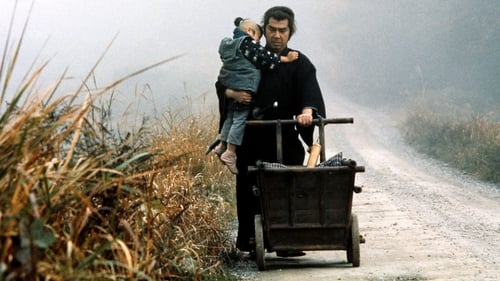
Director of Photography
아들을 동반한 검객 4

Director of Photography
Thirsting for revenge, Jokichi rashly attempts to assassinate the evil Chogoro but ends up being captured by Yakuza. His life is spared by Boss Juzaburo, in order that the harmony of an important commemoration not be further disturbed. Though now even more of an outcast, Jokichi is asked by another Yakuza boss, Umezo, to guard Oyuki, the wayward daughter of Juzaburo. The tragic consequences of this assignment will lead him into a deadly trap and a final confrontation with Chogoro.
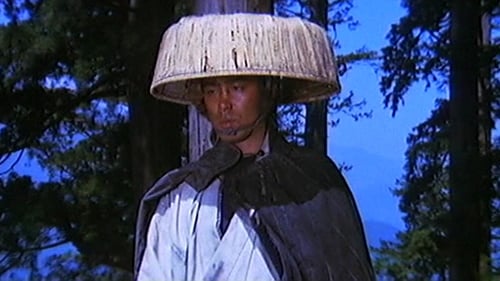
Director of Photography
Can a sinful man change and find peace? It's unlikely in gang-plagued Japan. Jokichi of Mikogami, a drifter (and hired sword), goes straight after protecting a woman in distress: they marry, have a son, and Jokichi pursues his father's craft. After three years, the gangs he embarrassed when he saved his wife find the family and leave Jokichi in grief, vowing revenge. To parry his terrible swift sword, rival gangs join forces, hiring a prostitute to pose as a woman needing help and breaking the code of honor to double cross the drifter. He finds unlikely allies: a thief who aids him for fun and a one-eyed swordsman who may be Jokichi's equal in skill and honor.
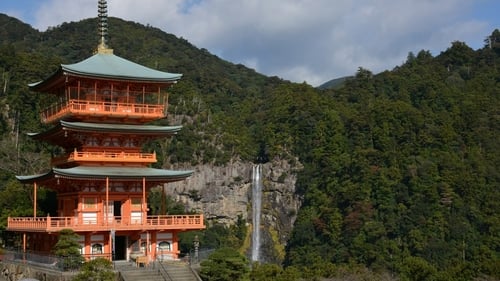
Director of Photography
Two Jesuit priests encounter persecution when they travel to Japan in the 17th century to spread Christianity and search for their mentor.
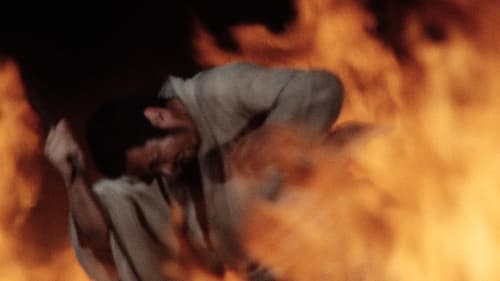
Director of Photography
Zatoichi is mentored by the blind leader of a secret organization as he contends with both the Yakuza and a jealous husband.
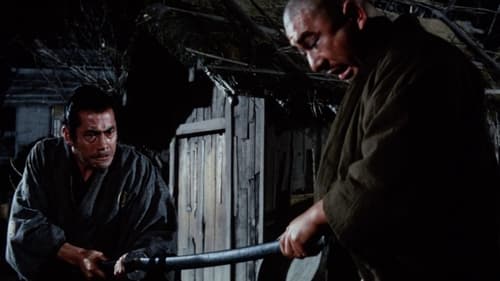
Director of Photography
With a price on his head, Ichi seeks tranquillity in a favorite village. Since his last visit, it has fallen prey to Boss Masagoro, the son of a merchant rumored to have stolen gold from the shogunate. The boss has hired Yojimbo as his hard-drinking enforcer, but Yojimbo is both a spy for the shogunate, trying to find the gold, and in love with the merchant's unwilling mistress, Umeno. Ichi hires on as the merchant's masseur and buys Umeno's freedom with his employer's own money. This embarrasses Yojimbo who withdraws from a pact with Ichi to stir up trouble between father and son and their gangs. As the two sides fight, Ichi finds the gold and sets up a final set of confrontations.

Director of Photography
Lord Oda Nobunaga gains control of nearly all of Japan and tries to enlist the aid of Magoichi and his 3.000 gunners.

Director of Photography
An abandoned temple in the mountains outside of the old capital city of Kyoto is the scene of a fated meeting between a traveling priest, two women, and a vicious killer. Bloody violence erupts whenever strangers approach the temple. Can the traveling priest bring his belief in the Buddha and rid the three temple residents of the devils that hold their souls?

Director of Photography
The film portrays a satirical view of today's heartless money-oriented society.
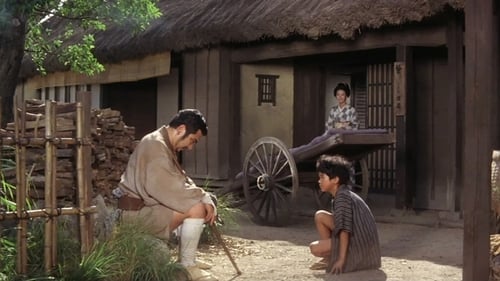
Director of Photography
Zatoichi runs afoul of some evil fugitives, working for a corrupt law official.
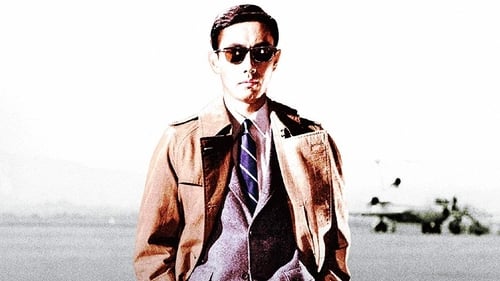
Director of Photography
Raizô Ichikawa reprises his role as the restaurant-cook-turned-contract-killer in this sequel to Kazuo Mori's stylish 1967 thriller A Certain Killer.
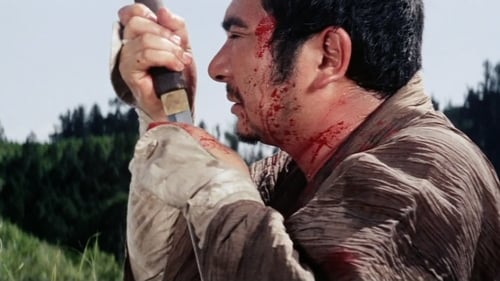
Director of Photography
When a local gambling house kidnaps some peasants because they failed to pay their debts, a rival gambling house pays their debts and sets them free.

Director of Photography
A former soldier, reduced to working at a restaurant post-war, becomes a contract killer for the yakuza gangs he's in contact with.

Director of Photography
During a Soviet circus tour in Japan, a small street musician, Ken, meets a clown, Yuri Nikulin. Upon learning that his sick father is being treated in the Soviet Union, Ken sets off in search of him. The friendship of the great clown and the boy continues in Moscow.
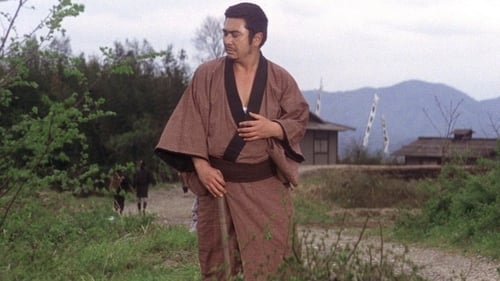
Director of Photography
Zatoichi comes upon a dying man who asks him to give a bag of money to "Taichi". Zatoichi has no idea who this is but when he comes upon a small town harassed by gangsters, he finds that "Taichi" was the man's young son. Along his travels he also met a blind monk who makes Zatoichi question his murderous lifestyle. In trying to help the town, Zatoichi kills some gangsters and becomes a hero to the boy. He must make a choice of whether to use non-violence and set a good example, or violence and set the boy on the wrong path in life.
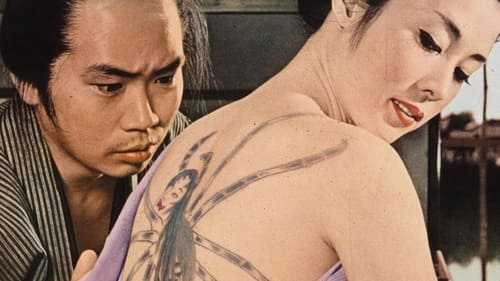
Director of Photography
전당포 사장의 딸 오츠야는 종업원 신스케와 함께 사랑의 도피를 떠난다. 둘의 짧은 사랑도 잠시, 그들이 묵던 숙소의 주인 켄지는 신스케를 죽이고 오츠야를 유곽에 팔아 넘길 궁리를 하고 문신사 세이키치는 오츠야의 아름답고 흰 피부에 일생일대의 문신을 새기고자 하는 욕망에 이끌린다.
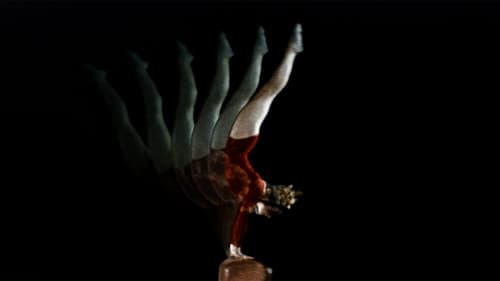
Cinematography
This impressionistic portrait of the 1964 Tokyo Summer Olympics pays as much attention to the crowds and workers as it does to the actual competitive events. Highlights include an epic pole-vaulting match between West Germany and America, and the final marathon race through Tokyo's streets. Two athletes are highlighted: Ethiopian marathon runner Abebe Bikila, who receives his second gold medal, and runner Ahamed Isa from Chad, representing a country younger than he is.

Director of Photography
This impressionistic portrait of the 1964 Tokyo Summer Olympics pays as much attention to the crowds and workers as it does to the actual competitive events. Highlights include an epic pole-vaulting match between West Germany and America, and the final marathon race through Tokyo's streets. Two athletes are highlighted: Ethiopian marathon runner Abebe Bikila, who receives his second gold medal, and runner Ahamed Isa from Chad, representing a country younger than he is.

Director of Photography
Ronin samurai Ibuki-san enters a town and sells his skills to the warring families. He falls in love with the beautiful horse stable owner but like all heroes, cannot stay.
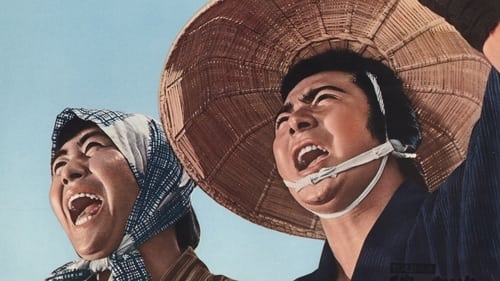
Cinematography
The second film in the "Suruga yukyoden" series, in which Shintaro Katsu plays Jirocho Shimizu. The film features Omasa, Komasa, Ocho, who will become Jirocho's wife, as well as other members of his future family. There is a particularly great swordfight near the end where Katsu and cronies attack the rival villainous yakuza clan to rescue their ailing, elderly boss. The action choreography, cinematography and editing of this sequence is quite brilliant, treading a difficult tightrope act between genuinely goofy antics and exhilirating, bloody violence.
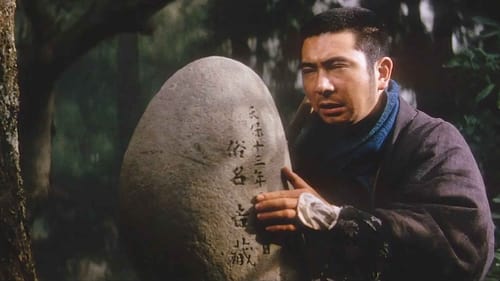
Director of Photography
Ichi travels to the village of Itakura to pay his respects at the grave of Kichizo, a man he killed two years ago. When some tax money is stolen while in transit to the governor he is accused and sets out to find the money and clear his name.
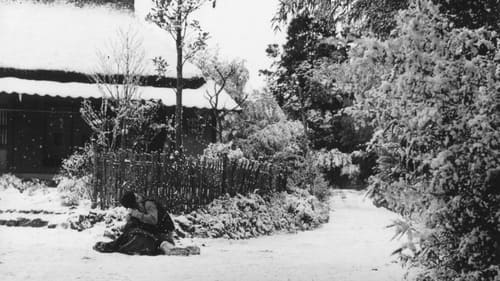
Director of Photography
Based on a novel by Tsutomu Mizukami, this haunting melodrama focuses on a young bamboo worker who takes his father's prostitute as his wife.

Director of Photography
The warlords overrun the country while the farmers are starving, and forced to become soldiers to keep the wolf from the door. The farmers are recruited in groups of fifteen. In Yaju's village, there are only twelve men, so they press Oto, who looks more like a boy than a girl, to join, disguised as a man.

Director of Photography

Director of Photography
Machida (Shintaro Katsu) is in constant trouble because of his instincts to do right every time, even when it endangers his life. A gang hires him for his "forceful personality," and assigns him to kill evil people, a president of a loan company and a drug baron.

Director of Photography
우시마츠의 아버지는 그에게 자신의 하층 계급 유산을 절대 드러내지 말라고 말했고, 몇 년 후, 그는 이제 그러한 차별에 맞서 싸우는 운동가에게 비밀을 털어놓을 생각을 하고 있다.

Director of Photography

Director of Photography
Asakichi beats a ganster, Sada, in a physical fight, leading to recognition by Sada's clan boss. When Kotoito, the geisha Asakichi is in love with, is kidnapped by a rival clan and sold to a a house of pleasure, Asakichi and Sada set out to rescue her.

Director of Photography
One of Japan's most popular stories is the tale of Kutsukake Tokijiro, a traveling gambler who finds that he must take care of the wife and child of a yakuza he had been forced by the code of the gamblers to fight man to man. In a brilliant performance from super-star Ichikawa Raizo, with strong support from two of the greats from Toho, Shimura Takashi (7 Samurai) and Aratama Michiyo (Sword of Doom) the heartfelt story reaches new heights. Tokijiro, having learned the true nature of the boss to whom he was obligated for having spent a night and eaten at the gang's headquarters takes up arms against them in a running battle fought across the back roads of the entire nation. Another powerful rendition of this superb story, it is not to be missed!
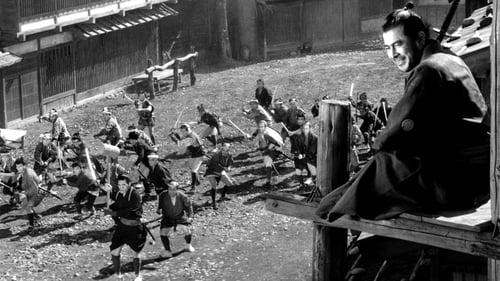
Director of Photography
떠돌이 무사가 어느 마을의 여인숙에 들린다. 그곳은 두 패로 나뉜 악인의 무리가 세력다툼을 벌여 유령 마을처럼 되어버린 야도바 마을. 무사는 악인의 무리 중에서 돈을 많이 주는 쪽인 비단을 파는 사람들의 요짐보가 되어 일을 해준다. 하지만 술을 파는 무리 중 한 명의 아들인 우노스케가 권총을 갖고 마을로 들어오며 상황은 급변한다. 우노스케는 자신이 속한 파와 적대적인 관계에 있는 무리들을 무차별적으로 죽인다. 운 좋게도 요짐보는 마을 여관주인의 도움으로 마을 밖으로 도망쳐 근처에 있는 절 가까이 숨어 있는다. 하지만 얼마 후 여관주인이 우노스케에 의해 납치당했다는 사실을 알고 다시 마을로 들어오는데...

Director of Photography
Set in 1926 when Japanese tradition was much stronger, this drama looks at the inner workings of a small family, especially the relationship between a sister and brother.
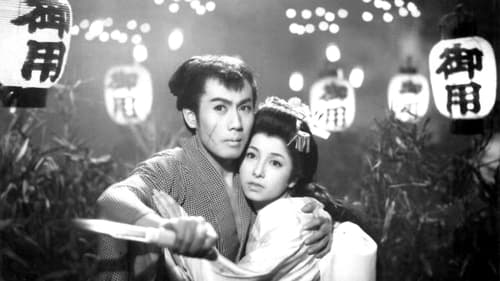
Director of Photography
The film depicts the scarring of Yosaburo at the hands of yakuza thugs who catch him with mistress of the gang boss. Despite the physical and emotional scars he now carries with him, Yosaburo falls for a young noblewoman. The rest of the film follows the two as they fend off attacks from gangs and the police.

Director of Photography
일본 전통 버선인 타비 회사의 5대 독자로 태어난 키쿠지. 그의 인생은 어머니와 할머니에 의해 좌지우지된다. 그는 어머니와 할머니가 고른 여성과 결혼하지만, 아들을 낳은 후 집안의 법도를 따르지 않았다는 이유로 어머니와 할머니는 그의 아내를 쫓아낸다. 아버지가 돌아가신 후, 키쿠지는 사업을 물려받게 되고 게이샤를 만나 사랑에 빠지지만, 그녀 역시 아들을 낳은 후 어머니와 할머니에게 쫓겨나고 만다.

Director of Photography
The first story concerns an attractive young woman who works in a Tokyo nightclub. Her plan for a solid financial future has a double whammy. In the second story, a beautiful young woman is employed by an unscrupulous real estate agent to convince male clients to invest in worthless property. The last story is about a widowed geisha who has no real financial worries and who falls in love with a forger.
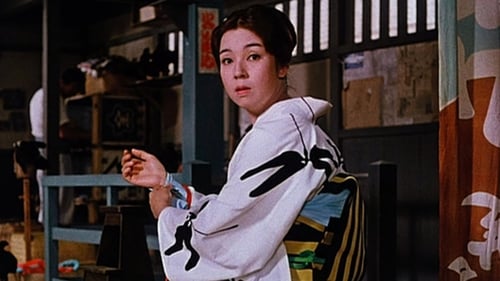
Director of Photography
고마주로의 유랑극단이 가부키 공연을 한다는 소식에 동네 사람들은 기대에 부푼다. 그런데 사실 고마주로는 이곳에 사는 고야와 사랑했던 사이로, 그를 삼촌으로 알고 자란 기요시라는 아들까지 두었다. 한편, 고마주로를 흠모하던 여배우 스미코는 그의 비밀을 알게 되자 질투심에 휩싸인다.
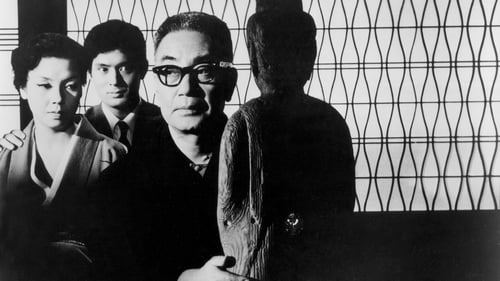
Director of Photography
고미술 감정가인 겐모치는 부인 이쿠코에게는 비밀로 정력 증진을 위해 주사를 맞으러 병원에 다니며, 병원 인턴인 기무라를 딸 도시코의 남편으로 생각하고 있다. 병원에 온 이쿠코는 남편의 통원 사실을 알지만 아무 말도 하지 않는다. 부부는 상대가 훔쳐 보고 있다는 것을 서로 알면서 각자 일기를 쓰고 있다. 기무라가 집을 방문하여 같이 술을 마신 날 밤 목욕탕에서 잠이 들어버린 이쿠코의 나신을 겐모치는 기무라에게 맡긴다. 이렇게 세 명의 기묘한 관계가 시작되고 질투로 부부 관계를 다시 일으키려 하는 겐모치는 고혈압으로 위험한 상태가 된다. 한 편으로 기무라와 도시코는 이미 관계를 맺고 있으며 이쿠코와 기무라와의 관계를 의심하면서도 기무라와 약혼을 한다. 결국 겐모치가 죽고 장례식이 끝나 재산 정리가 되자 이 집의 재산으로 개업을 생각했던 기무라는 실망하여 관계를 끊고 싶다고 생각한다. 도시코는 엄마의 홍차에 농약을 넣지만 노파의 잘못으로 약은 바뀌어져 3명의 셀러드에 뿌려져 있다.

Director of Photography
The film won 1959 Blue Ribbon Awards for best actor Raizo Ichikawa and for best cinematography Kazuo Miyagawa. The film also won 1959 Kinema Junpo Award for best actor Raizo Ichikawa.
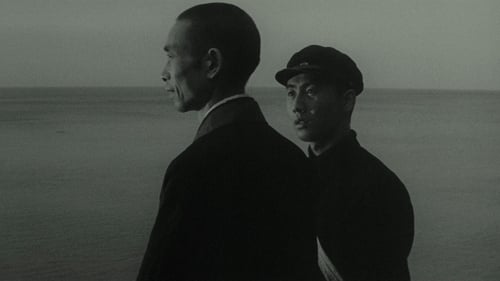
Director of Photography
아버지의 유서를 갖고 교토의 취각사를 찾은 미조구치는 절의 아름다움에 푹 빠져 그곳에 머무르게 된다. 하지만, 속세에 물든 주지스님과 절을 찾는 관광객과 미군, 기생 등의 모습에 그는 걷잡을 수 없는 분노에 빠지게 된다.

Director of Photography
Suzunosuke faces perhaps his wildest foes. This evil gang is lead by a one-eyed birdman and other demonic creatures.

Director of Photography

Director of Photography
A traditional bar mistress in Kyoto clashes with her Tokyo rival.

Director of Photography
A story of aristocratic star-crossed love.
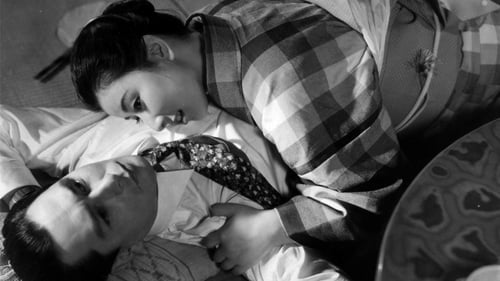
Director of Photography
In Kyoto a young kimono maker with traditional ideas gets involved with a married professor.
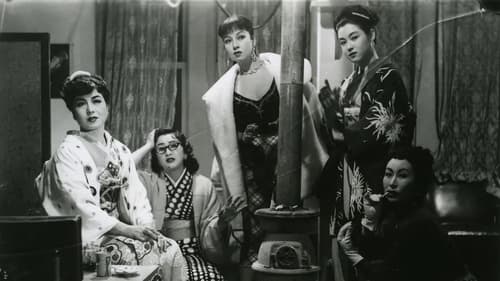
Director of Photography
정부에서 매춘을 금지하자는 논의가 벌어지고 있을 무렵, 도쿄 공창가의 유곽 ‘꿈의 마을’에서는 다섯 명의 매춘부들이 각자 사연을 안고 살아간다. 하나에는 있으나 마나 한 남편과 하나뿐인 아이를 돌보고, 과부인 유메코 역시 홀로 아들을 건사한다. 요리에는 구혼하는 남자 때문에 고민이고, 야스미는 빚을 갚기 위해 착실히 돈을 모은다. 미키는 앞일 따위는 걱정하지 않는데, 어느 날, 고베에서 아버지가 찾아온다. 각양각색의 사연을 가진 매춘부들의 삶을 통해 현대 사회와 여성들의 모습을 생생하게 그려낸 미조구치의 유작이다. (2016 영화의 전당 - 미조구치 겐지 60주기 특별전) 남자들이 하룻밤의 쾌락을 찾아서 출입하는 환락가. 겉으로 그럴듯해 보이는 이 세계는 실은 하루하루의 절박한 삶을 살아가는 작부들의 애환이 서려있다. 살롱 ‘꿈의 고향’에는 이재에 밝은 야스미, 가출 소녀 출신의 미키, 실업자인 남편을 먹여 살리는 하나에 등 여러 여인네들이 남자들을 끌어들이기 위해 애쓴다. 하지만 마침 ‘매춘금지법안’이 국회에 제출되면서 이 거리에도 여러 가지 파문이 일어난다. 자신들의 생계가 위험해질 가능성이 커짐에 따라 그녀들은 자신의 삶에 대해 다시 생각하게 된다. 절박한 상황에 놓인 작부들의 모습을 호화로운 캐스팅으로 그려낸 미조구치 여성 영화의 최고봉이라 할 만한 작품으로 그의 유작이 되었다. 이 영화가 제작될 당시 실제로 ‘매춘금지법’이 일본에서 제출되어 1956년 5월에 가결되었다. 그 시사성 때문에 개봉 당시 대히트를 기록했다. (2010 일본영화거장전 - 미조구치 겐지)
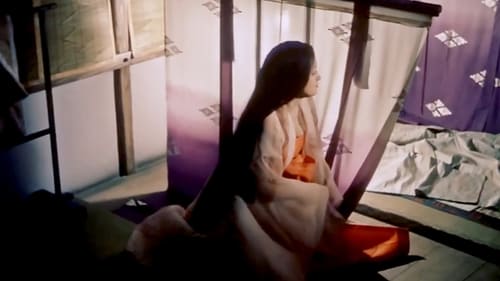
Director of Photography
Special Forces commander Captain Tadamori returns to Kyoto after successfully defeating the uprising of pirates in the western sea of Japan. But because the high courtiers dislike career soldiers gaining power and influence, they ignore the will of ex-Emperor Toba and refuse to reward the captain. Reward recommender Lord Tokinobu is punished, and the captain sends his son Kiyomori to the Lord's residence, where he falls in love with Tokiko, the Lord's daughter. Meanwhile, Kiyomori finds out that he is possibly the ex-Emperor's son... Written by L.H. Wong

Director of Photography
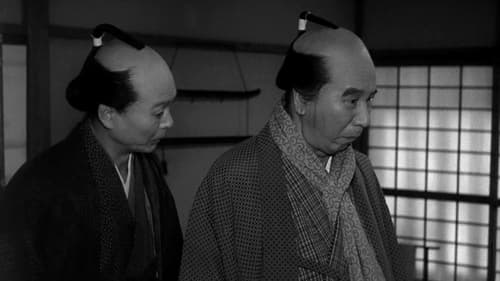
Director of Photography
모헤이는 부유한 표구상 집안에서 달력 제작 전문으로 일한다. 주인집 마님 오상이 돈 문제로 어려움을 겪고 있다는 것을 알게된 그는 그녀에게 돈을 마련해주려다가 오히려 오해를 당해 오상과 불륜의 관계라는 오명을 뒤집어 쓰게 된다. 주인의 분노를 알게된 두 사람은 가출해서 비와호에서 몸을 던져 자살하려고 한다. 하지만 같이 도주하는 과정에서 두 사람에게는 진정한 애정이 싹트기 시작한다. 그리하여 두 사람은 목숨을 걸고 도피행을 계속하기로 한다.
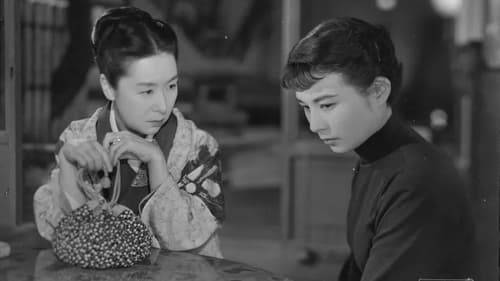
Director of Photography
남편과 사별한 후 하츠코는 교토에서 혼자 힘으로 유곽을 꾸려 나간다. 외동딸 유키코는 도쿄의 음악학교에서 공부하고 있다. 그런데 약혼한 지 얼마 되지 않았던 유키코가 돌연 자살을 시도하고, 놀란 하츠코는 도쿄로 달려가 유키코를 집으로 데려온다. 하츠코는 마음에 두었던 젊은 의사 마토바에게 유키코의 치료를 부탁한다. 상심해 있던 유키코는 마음이 통하는 마토바와 점점 더 가까워진다.
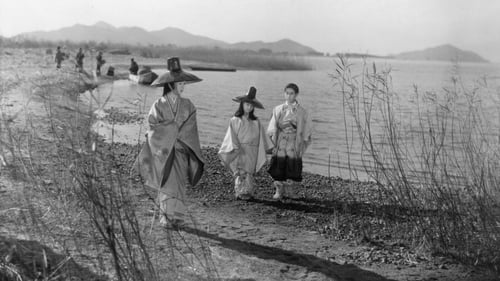
Director of Photography
여행 중 인신매매범의 손에 걸려 모친과 헤어지게 된 주시오와 안주의 오누이는 호족 산쇼다유에게 팔리게 된다. 노예나 다름없게 된 이 두 사람은 중노동에 시달리면서도 모친과의 재회를 꿈꾸며 하루하루를 보낸다. 그로부터 십년 후 여전히 산쇼다유의 수용소에 갇혀있는 이들은 어느 날 새로 들어온 젊은 여인이 부르는 노래에 자신들의 이름이 들어있는 것을 알고는 깜짝 놀란다.
인신매매가 횡행하는 헤이안 시대를 배경으로 부모 자식 간의 애정 그리고 인신매매 등의 인권 문제를 그리고 있는 작품으로, 단순한 이슈로서의 사회성을 인간 조건의 비극성에까지 끌고 간 걸작이다.
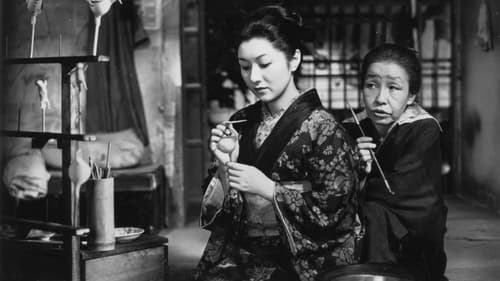
Director of Photography
문인들이 많이 드나들기로도 유명한 전통의 화류가인 교토의 기온 거리. 이 거리에서 오랫동안 게이샤로 일해 왔던 미요하루의 집에 어느 날 어린 여자아이가 찾아온다. 그녀의 이름은 에이코. 어머니를 잃은 그녀는 무희(마이코)가 되기를 원해 미요하루에게 찾아온 것이다. 무희로 제대로 만들기 위해서는 적지 않은 비용이 든다. 하지만 어떤 고생이라도 감수하겠다는 에이코의 열성에 감탄한 미요하루는 그녀를 받아들이기로 한다.
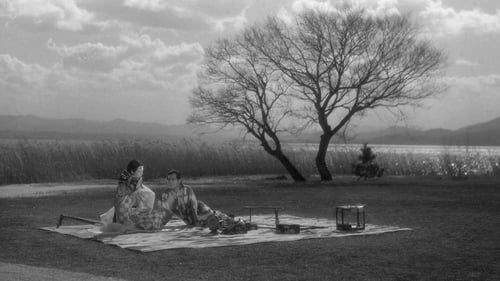
Director of Photography
도공 겐주로는 전란의 혼란을 틈타 큰 돈을 벌 생각을 한다. 한편 그의 매제 도베이는 사무라이로서 출세하는 것이 꿈인 사내다. 겐주로의 처 미야기는 돈은 못 벌더라도 가족 간의 단란함이 훨씬 소중하다고 생각한다. 겐주로는 만들어놓은 도기를 팔러 도회로 나가 상당기간 소식이 끊어진다. 그는 시장에서 어느 귀부인으로부터 물건을 배달해달라는 부탁을 받는데, 그녀의 아름다움에 한눈에 반하고 만다. 현실과 환상의 구분을 일거에 무너뜨리는 뛰어난 영상미와 인간의 어리석음의 근원을 파고드는 설득력 있는 스토리로 미조구치 겐지의 이름을 세계에 알린 작품일뿐 아니라 후대의 영화 작가들에게 큰 영향을 끼친 영화이다.

Director of Photography
Kazuo Miyagawa’s prizewinning black-and-white cinematography draws out the moral shadings of Nobel laureate Yasunari Kawabata’s 1952 novel Thousand Cranes, a quietly devastating story of a young man, orphaned during the war, who stumbles into a passionate yet tragic relationship with his late father’s mistress and her daughter.

Director of Photography
A family of Kyoto textile workers struggles after tragedy.

Director of Photography
오시즈라는 아가씨와 맞선을 보게 된 젊은 골동품상 신노스케는 그녀가 아니라 그녀의 언니인 오유에게 더욱 끌리게 된다. 미망인이자 한 아이의 모친인 오유는 그런 신노스케의 마음에 아랑곳하지 않고 오시즈에게 결혼을 권한다. 오시즈는 신노스케가 자신보다 언니에게 더 끌린다는 것을 알면서도 두 사람의 가교 역할을 해주기로 결심하고 결혼을 받아들인다.
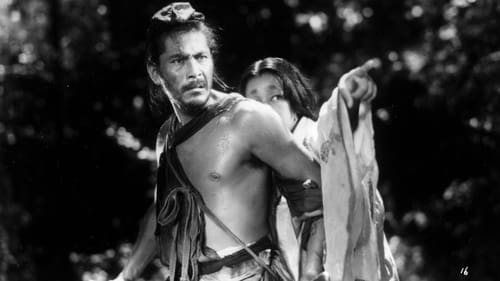
Director of Photography
전란이 난무하는 헤이안 시대, 폭우가 쏟아지는 라생문의 처마 밑에서 나뭇꾼과 스님이 심각한 표정으로 생각에 잠겨 있다. 잠시 비를 피하러 그곳에 들른 한 남자. 이들은 이 남자를 상대로 최근에 그 마을에 있었던 기묘한 사건을 들려준다. 사건의 배경은 녹음이 우거진 숲 속. 사무라이 타케히로가 자신의 아내 마사코와 함께 숲 속을 지나고 있었다. 산적 타조마루는 그들 앞에 나타나 속임수로 타케히로를 포박하고 마사코를 겁탈한다. 오후에 그 숲에 들어선 나뭇꾼은 타케히로의 가슴에 칼이 꽂혀있는 것을 발견하고 관청에 신고한다. 타조마루는 체포되고, 행방이 묘연했던 마사코도 불려와 관청에서 심문이 벌어지는데...

Director of Photography

Cinematography
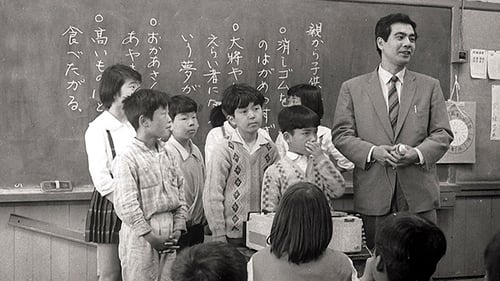
Director of Photography
A small-town boy with a learning disability attempts to fit in with his classmates.

Cinematography
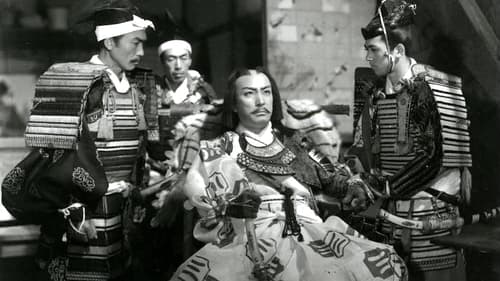
Cinematography
Set in the late thirteenth century, this film depicts the defense of southern Japan led by the Kono clan against the Mongol invasion in 1281.

Cinematography
According to Donal Richie in The Japanese Film it was meant to do for sumo wrestling what Kurosawa had done for judo in Sanshiro sugata, and that Kurosawa wrote it for Daiei after "drinking up all [his] money" (from his autobiography).

Director of Photography
Matsugoro is a poor rickshaw driver whose animated spirit and optimistic demeanor make him a favorite of the town. Matsu helps an injured boy, Toshio, and is hired by the boy's parents.
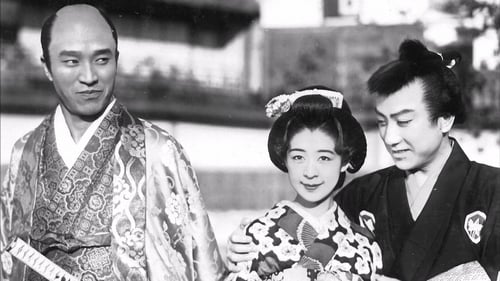
Director of Photography
An umbrella maker with a shopping addiction finds himself in dire straits when his debts force him to consider selling his attractive, desirable daughter to a suitor she doesn't love.
